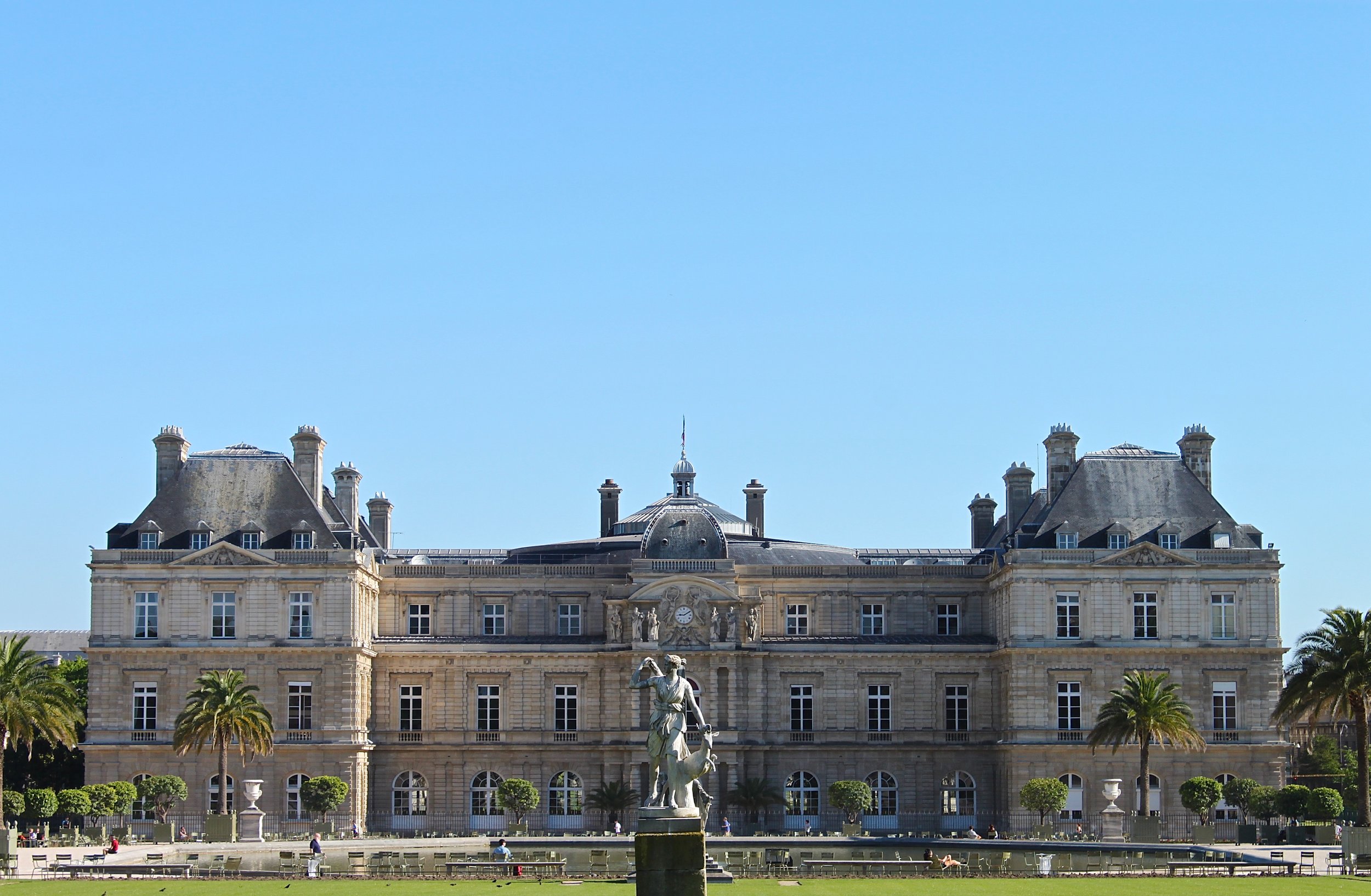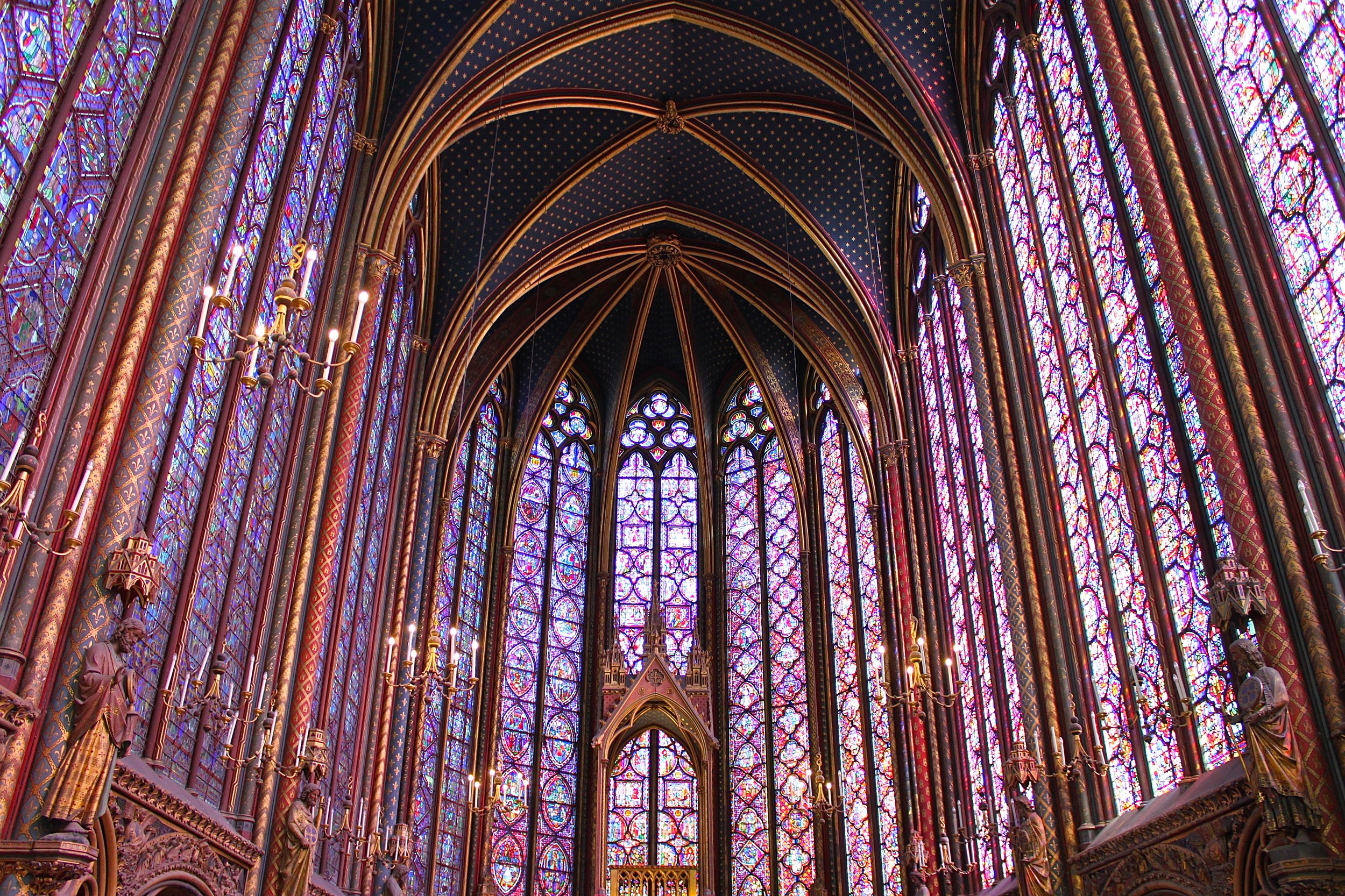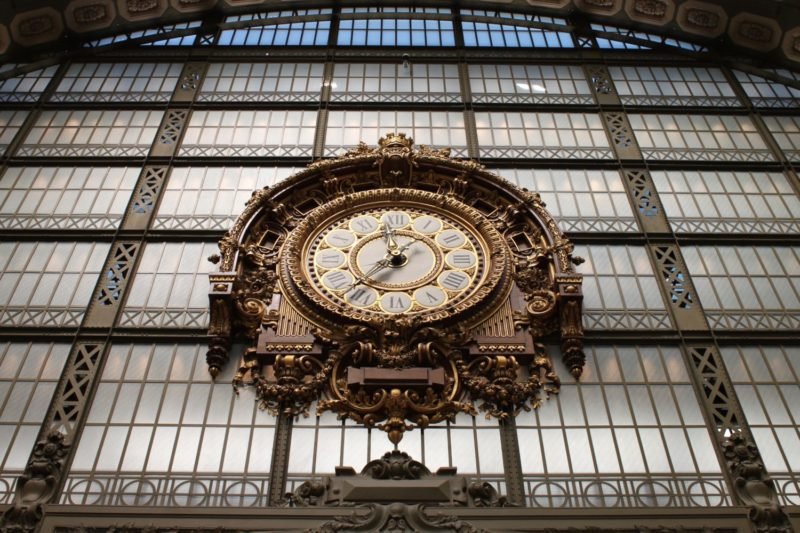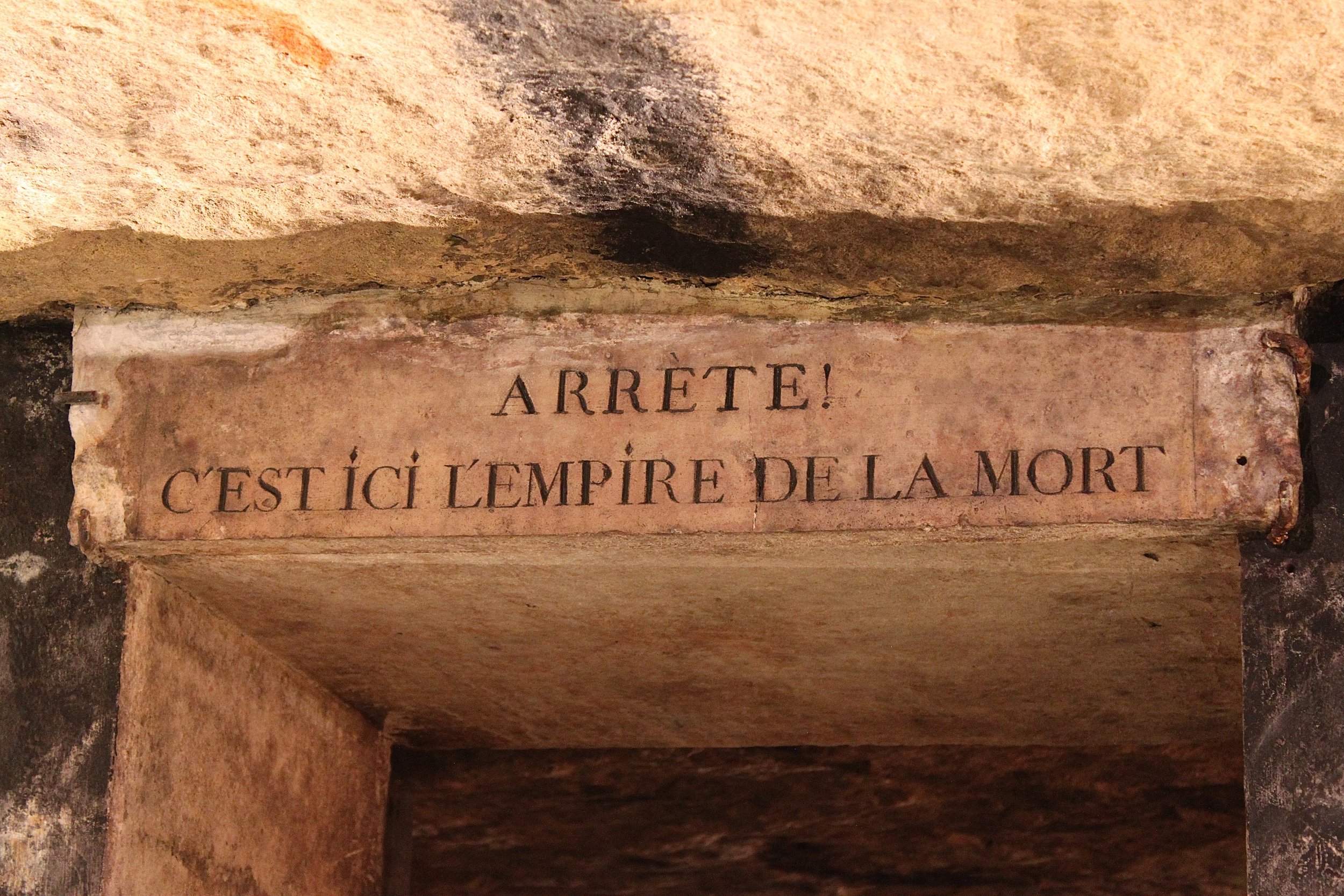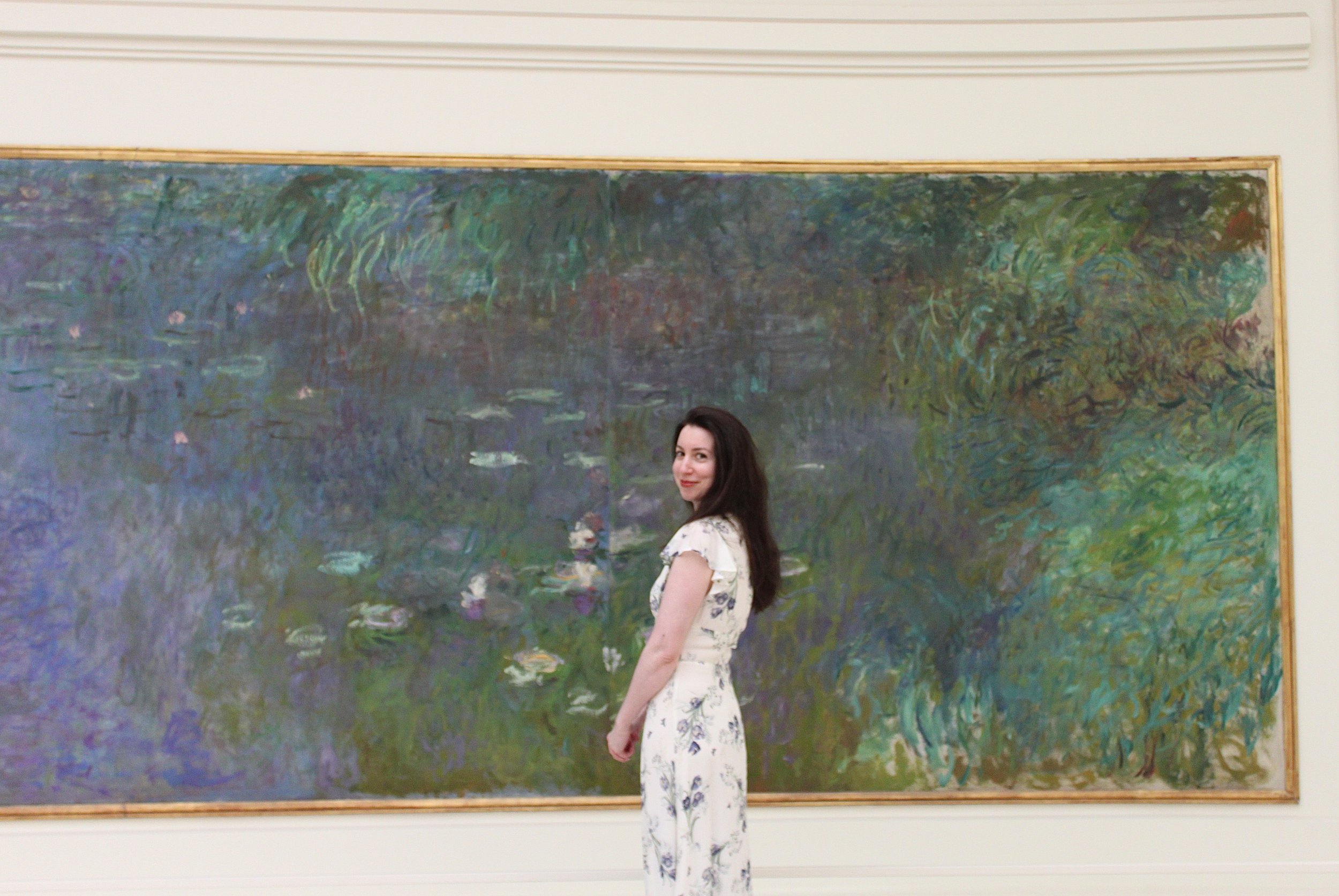PARIS MUST SEES
Generally when you are looking to visit a place and you ask for recommendations, you hear the same best places from everyone. But for Paris, there is so much to see and do, that when you ask multiple people what you should do in the city of lights, there are endless answers. This list is just a few of my personal favorites that you must go to at least once in your life!
Luxembourg Gardens
The Luxembourg Gardens (Jardin du Luxembourg in French) is a public garden created in 1612 by Marie d’Medici to pair with the Luxembourg Palace. Today, the Palace is home to the French Senate. There are beautiful flowerbeds, perfectly manicured lawns, and hidden paths throughout. You can also play tennis, chess, or rent remote control boats!
Notre-Dame Cathedral
On a little island in the Seine, the Notre-Dame Cathedral (Cathedrale Notre-Dame de Paris in French) stands tall as one of the most famous Catholic churches in the world. Admission to the church is free, but you must purchase tickets if you want to climb to the top and see the gargoyles up close (I would suggest in advance!) Even then, you will always have to wait in a HUGE line, because only a certain number of people are allowed up at a time! To walk to the top, get there about 30-40 minutes before it opens at 10 in the morning. Even though you will be waiting for 30 minutes, it is worth avoiding an hour to two-hour wait.
Atop Notre Dame
Sainte-Chapelle
Just a few steps from the Notre-Dame Cathedral is the Sainte-Chapelle, a gothic royal chapel famous for its 1,113 stained glass windows (it will take your breath away!) Built in only seven years, the Sainte-Chapelle is made up of two different chapels, so make sure you walk up to see the kaleidoscope of windows! While I again strongly suggest you purchase your tickets in advance, you will still have to wait in a very long line. Therefore, arrive early in the day, around 9 in the morning when it opens.
Place des Vosges
Place des Vosges is one of the oldest squares in Paris, filled with little galleries, shops, and cafes that all border a lovely park. Grab a macaron at Carette, stroll under the arches of this perfect square, or sit in the grass and relax!
Palais Garnier
The Palais Garnier is a Paris opera house, which many know as the backdrop for the book and later turned musical, The Phantom of the Opera. You can see a performance in this historical monument, take a guided tour, or walk around yourself and view the gorgeously ornate ceilings of the grand foyer, the beautifully carved staircases, or stand on the balcony and people watch from above. The Palais Garnier, along with the Notre-Dame Cathedral, are my favorite sights in Paris!
Louvre Museum
Probably the world’s most famous museum and certainly the world’s largest art museum, the Louvre (Musee du Louvre in French) is a historic landmark in Paris. Not only are there about 35,000 artworks at the museum, but also the structure itself is something to appreciate. The Louvre was once a fortress and then a royal residence. Because the museum welcomes about 15,000 people a day, it is of utmost importance that you purchase your tickets in advance. (Keep in mind; the museum is not open on Tuesdays, and I would avoid the weekend entirely.) Your ticket will say a specific time, and it is important not to be late!
Tuileries Garden
The Louvre as well as the Place de la Concorde act as bookends to the Tuileries Garden (Jardin des Tuileries in French), created by Catherine d’Medici in 1564 for the Tuileries Palace. It was opened to the public in 1667 and then became a public park after the French Revolution. Grab a baguette and sit under the perfectly cut square trees or stroll around to see a number of gorgeous sculptures, including a few of Rodin’s work in bronze. A notable sight within the Tuileries Garden is the Arc de triomphe du Carrousel, crafted to celebrate the victories of Napoleon.
Musee d’Orsay
Across from the Tuileries Garden is the Musee d’Orsay, a railway station converted into a museum! While the Louvre houses old works from the Middle Ages to 1848, Musee d’Orsay displays collections of art from 1848 to 1914. Notable artists include Monet, Degas, Renoir, Cezanne, and Van Gogh. Even though this museum is not as crazy crowded as the Louvre, I still would recommend purchasing tickets in advance. (Keep in mind; the museum is not open on Mondays, and I would avoid the weekend entirely.)
Musee Rodin
I know there are some museum titans in Paris, but this one is my favorite. Musee Rodin has two sites, the Hotel Biron in Paris and the Villa des Brillants at Meudon. The Hotel Biron was the French sculptor Auguste Rodin’s workshop, and he donated his collection of sculptures to the French Senate so that the Hotel would be transformed into a museum dedicated to his art. Gorgeous roses surround the famous sculpture The Thinker, and inside the building itself has notable sculptures like The Kiss and The Gates of Hell. Much like many of the museums in Paris, the building that holds all of this art is also quite a sight to behold.
Pont Alexandre III
The Pont Alexandre III is a bridge that crosses over the Seine, and is known for its gorgeously ornate fixtures. It’s great to cross and visit the Musee Rodin or to cross the other way and see the Champs-Elysses.
Arc de Triomphe
The Arc de Triomphe is one of the most famous monuments of Paris, and walking to the top gives you a great bird’s eye view of the entire city. A circular road surrounds the Arc, and 12 streets shoot off from it, so to access the Arc, you have to walk underground (the signs are very clear!) Purchase your tickets in advance. Choose 10 in the morning when it opens. There is only one way up and it is via a spiral staircase, so you don’t want to be too cramped in there with many people! You also want unobstructed views of the Eiffel Tower and the Sacre-Coeur all the way in the distance, so arriving in the morning allows you that freedom.
Sacre-Coeur
Every other place on this list is relatively close to each other, but the Sacre-Coeur stands tall in Montmartre, and is the highest place in the city. You can sit on the steps to the entrance of this Roman Catholic Church, go inside, or walk up to the top. While it may seem crowded on the steps and you cannot buy tickets in advance, there are not many who are willing to walk up the very narrow spiral staircase of 300 steps, but the unique and gorgeous views are worth it. I would suggest going later in the day to see a golden sunset.
This list only scratches the surface of what Paris has to offer! Trust me, I tried to keep this post short so as not to bore you with my love of this city, so go out and experience it for yourself!
Jardin du Palais Royal
Jardin du Palais Royal is one of my favorite gardens in Paris. It is open every day and I have found that there are not as many people here compared to some places like Jardin des Tuileries. The three wings that flank the gardens date back to the 18th century, and nowadays you will find coffee, clothing, and sweets being sold there! If you do indeed find crowds, they will most likely be taking pictures at the southern end of the garden, as there is a lovely art installation there by Daniel Buren called, “Colonnes de Buren” or “Les Deux Plateaux.” The art has caused quite a stir, with many people disliking how contemporary the art is, in juxtaposition to the Palace that provides the backdrop. Have a look for yourself and tell me what you think!
le Jardin du Palais Royal
Les Catacombes
In the 18th century, cemeteries were overflowing, so les Catacombes were created to place the dead elsewhere. The first moves were made in 1785, affecting the largest cemetery in Paris, the Saints-Innocents cemetery. Then starting in 1809, les Catacombes were opened to the public, and I must say, visiting was a very cool experience. Tickets sell out extremely quickly; so do not expect to be able to get tickets that same day. However, as long as you plan ahead, I would say you could visit les Catacombes any time, rain or shine, as we are going under Paris (the depth of a five story building, to be exact)! You will walk down 131 steps to find rows and rows of tibiae, alternating with skulls (and then remaining bones piled on top). There are also passages in French that encourage the visitor to think introspectively about death. If you are claustrophobic, absolutely do not visit here! To exit, you will have to walk up 112 steps (and your bag will be checked if you had the nerve to disturb the dead and take a bone).
les Catacombes
Musée de l’Orangerie
Musée de l’Orangerie is one of my absolute favorite museums, and that is because it houses works from some of my most favorite artists: Cézanne, Renoir, Pissarro, and Matisse. The big draw is, of course, the glistening water lilies of Monet. Eight large Water Lilies murals line the walls of two rooms, and it is positively breathtaking. Pictures do not do these rooms justice, though there will be plenty of people trying to capture the essence of Monet in photos and videos all around you. With that in mind, try to secure a museum ticket in advance for the earliest timeslot. Even then, get to the museum 20-30 minutes earlier than when it opens, as there will be a line. Once in, make a beeline to the Monet rooms! Though there will be many people, my experience has been quite positive. Everyone is very respectful of the art, and people generally sit or stand in the middle of the room, allowing unobstructed views of the wraparound art that envelops you. It is a relatively small museum, but it is located in le Jardin des Tuileries, so after your visit, you will be close to other iconic things to see in Paris such as the Louvre, Musée d’Orsay, Petit Palais, and more.
Monet’s Water Lilies
Panthéon
The Panthéon is a building that was conceived by the architect Jacques-Germain Soufflot as the Church of Sainte-Geneviève. And while it was used as a church many times over in the 19th century, today it is used as a civic building that houses the remains of remarkable French citizens, such as Victor Hugo, Voltaire, and Marie Curie. Something that I find particularly cool to see within the Panthéon is Foucault’s pendulum, which shows that the Earth rotates on its axis. I do not find this site to be as crowded as other places to visit in Paris, so I do not have a particular time of day to recommend visiting the Panthéon. However, last entrance is 45 minutes before closing!
le Panthéon
